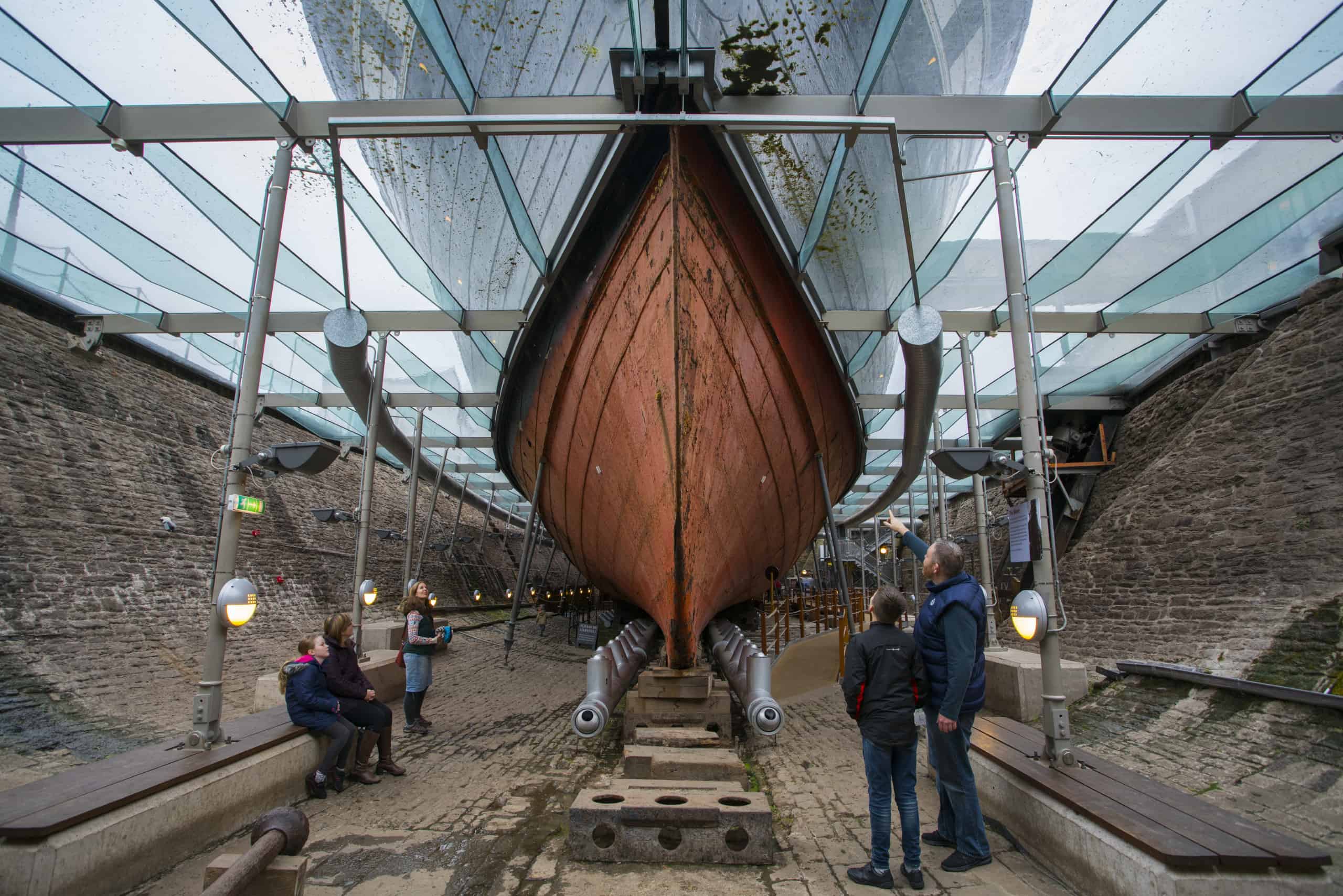On the surface a technical piece of business and engineering policy, the report details Brunel’s argument, put to Bristol’s Great Western Steamship Company, that an underwater propeller (or ‘screw’) should drive its newest ship. The argument, and document that recorded it, would shape the timelines of global history.
Whilst the propeller was a known technology, no ocean-going vessel had previously been driven by underwater propulsion. For millennia, the sail had been the only efficient method of connecting the seas, oceans and continents of the world. Just two years before the propeller report, in 1838, the Great Western Steamship Company, with the assistance of Brunel, had been the first company in the world to create a purpose-built, engine-powered vessel to cross the Atlantic. The resulting ship, the Great Western, condensed the Atlantic crossing between Britain and the United States from a period of 4-6 weeks to a period of less than 14 days. However, the ship was driven by paddle ‘wheels’ at its sides, requiring huge internal space for engines. The propeller, adopted as a result of Brunel’s arguments for the new, iron-hulled Great Britain, had far greater potential. Although Brunel argued the merits of the screw for propulsion, it would not be long before ship builders realised that with a propeller, the engines driving a ship could also be dropped low in its hold, leaving a large amount of space for people and goods.
Viewed as an experimental technology, the Great Britain, when launched in 1845, set off a small group of successor vessels in the following years. But businesses were unclear on how best to deploy and use the technology on the world’s oceans. 1852 proved a signal year. Two propeller driven ships, the Great Britain and the City of Glasgow, had their interiors reconfigured to carry emigrant passengers. The Great Britain itself had its engine arrangements changed to take up as little space as possible, and increased its capacity to carry passengers from 360 to 730, before embarking for Australia. The City of Glasgow was converted to carry emigrants on the Atlantic. These new arrangements combined capacity and speed. Travel and migration across the world’s oceans had new potential. Within 10 years of the Great Britain’s maiden voyage, the major Atlantic carriers of Europe began to move to the new technology. As later generations of ships increased in size, so physical capacity for migration and trade grew. Through UNESCO’s Memory of the World Programme, Brunel’s report, which persuaded a pioneering approach to ship building, has its place recognised in the timelines of global history, and the globalization of our world.
On March 3rd, 2023, a delegation from UNESCO visited Brunel’s SS Great Britain , which is still extant today, and is cared for by the SS Great Britain Trust, in Bristol, as part of an award-visiting visitor attraction. The delegation visited the Brunel Institute, a collaboration of the SS Great Britain Trust and the University of Bristol which serves as an archive, research, and education centre. Whilst there, delegates were able to see the propeller report and discuss both its content and significance with curators and historians. The discussion followed the principles of the Institute’s ‘Archive in 5’ programme, in which significant documents are discussed daily with members of the public in free, interactive sessions, reaching more than 10,000 people a year – best practice for the Memory of the World’s policy of enhancing public awareness of documentary heritage!





